I started an experiment recently when I was listening to a talk on ChatGPT. After being a moderately heavy user to get answers to questions, I was thinking if I can get ChatGPT to help generate questions pertaining to questions. Here are the screen shots of how I went about (Hidding the initial prompt first)
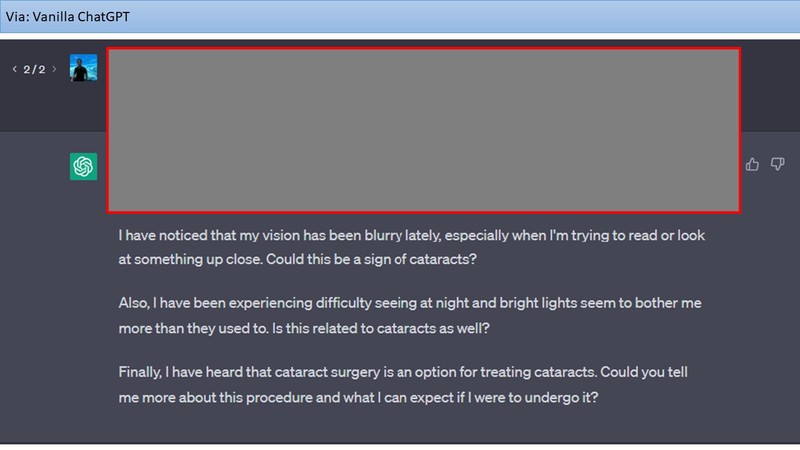
From the second question, I keep asking it to ask again like another person for a few times before I vary the question a little bit though I don't think I need too. A bit of typo didn't create any issue.
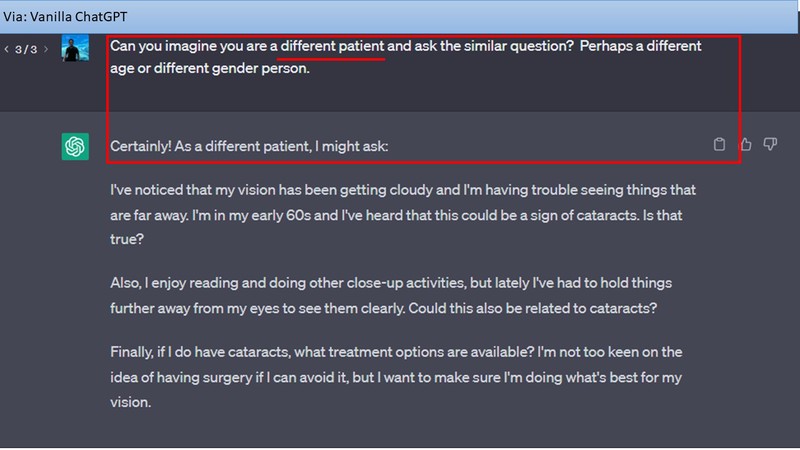
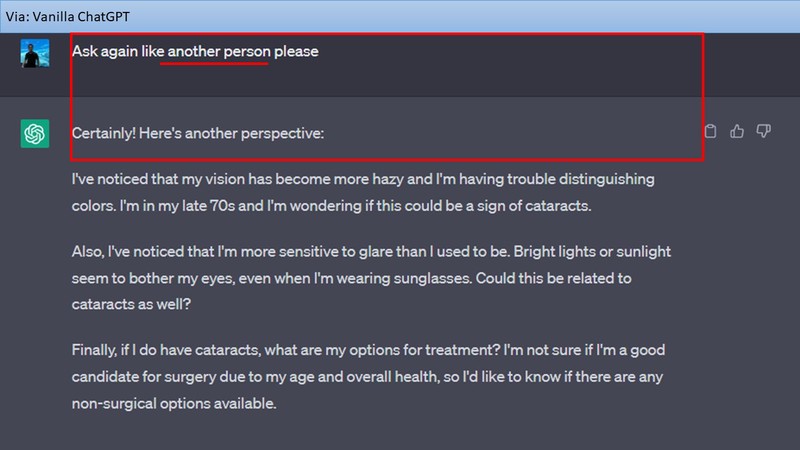
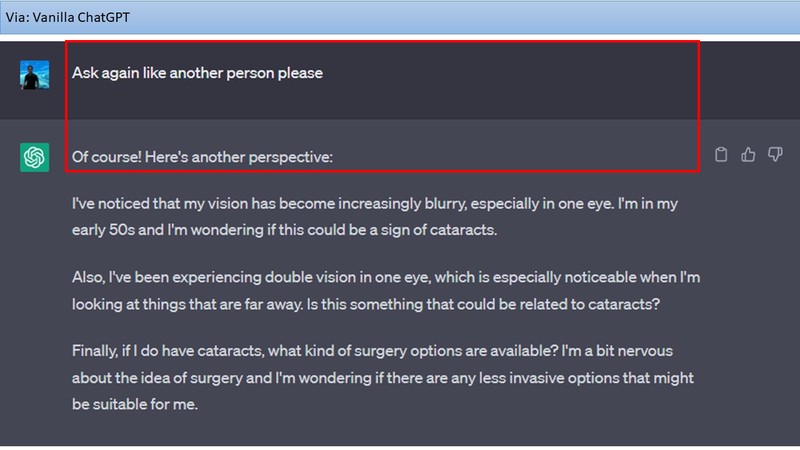
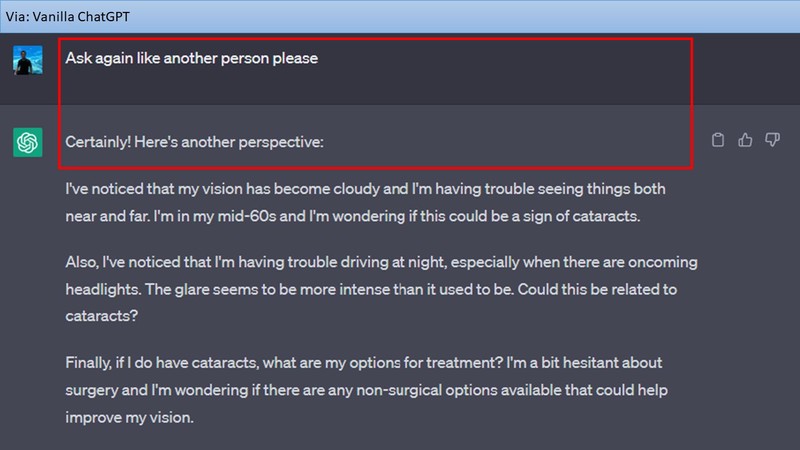
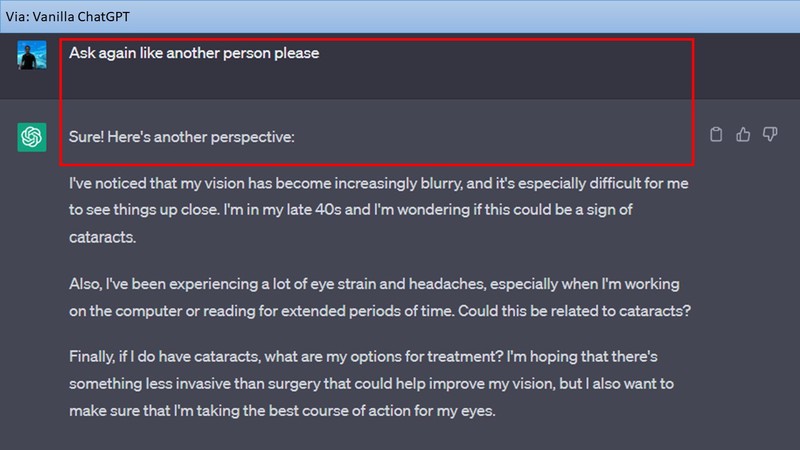
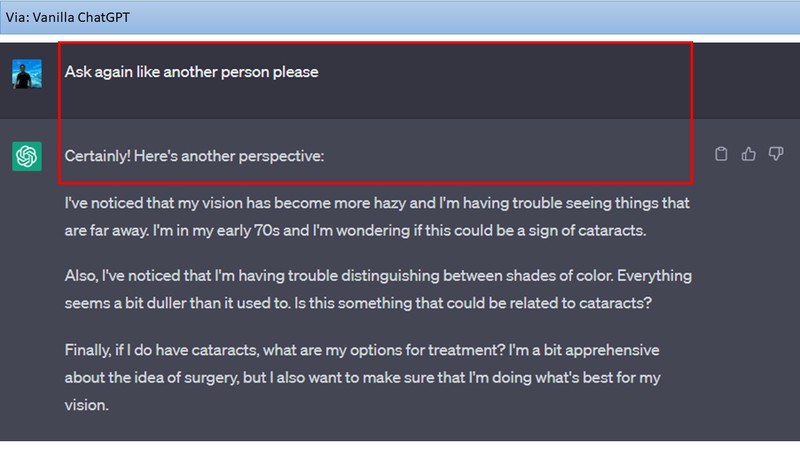
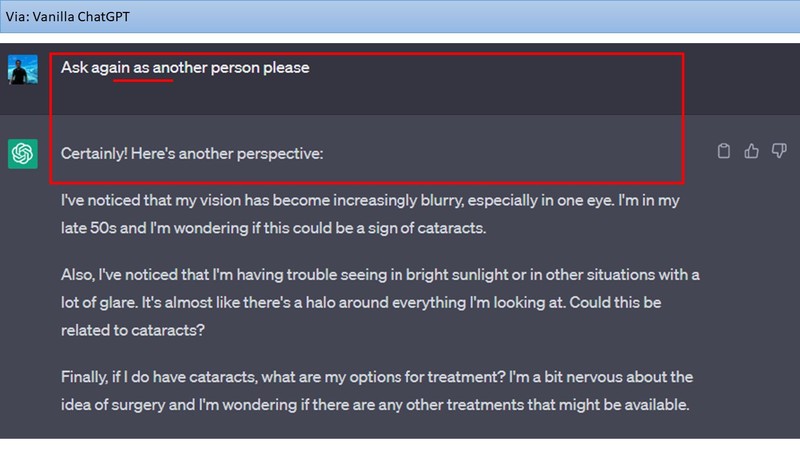
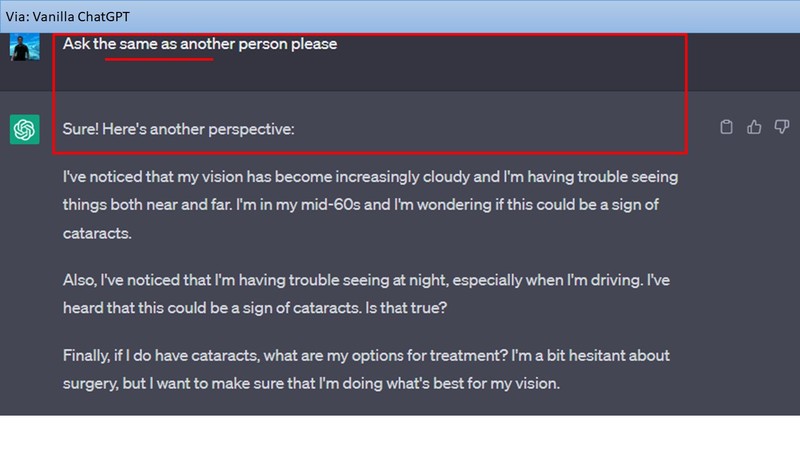
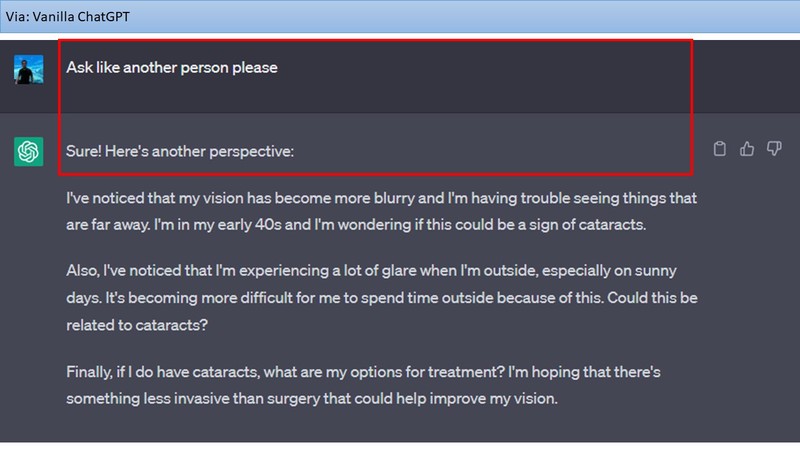
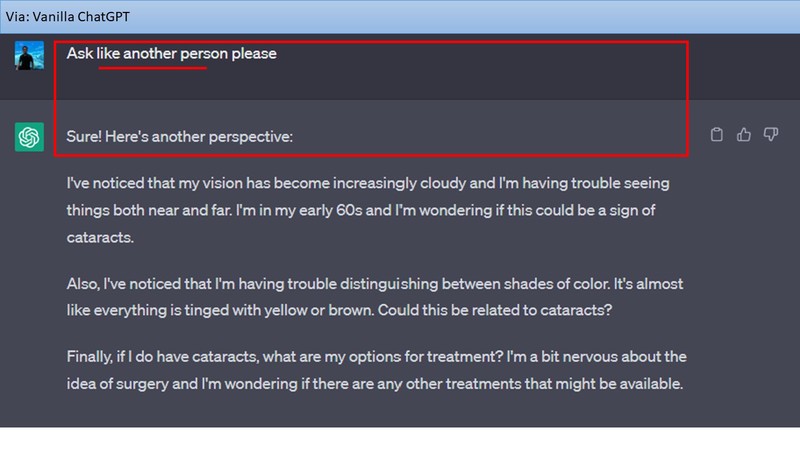
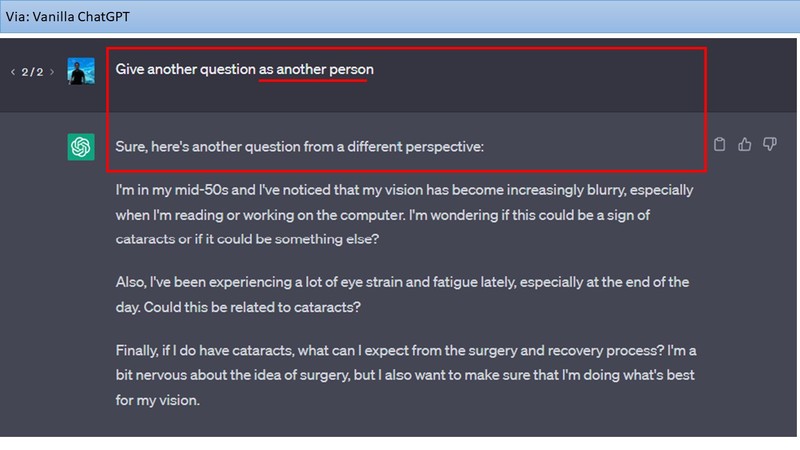
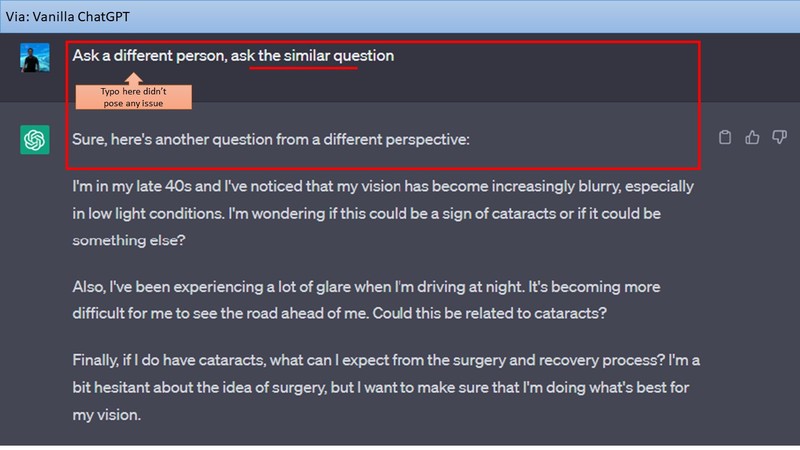
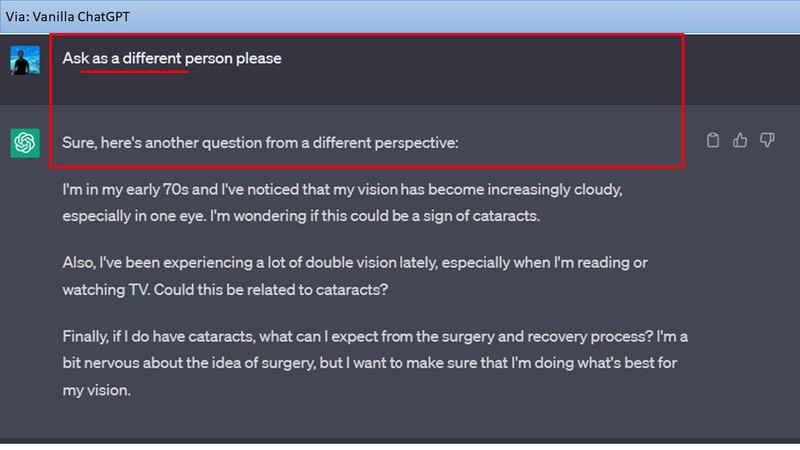
Next, I started asking for questions in different languages.
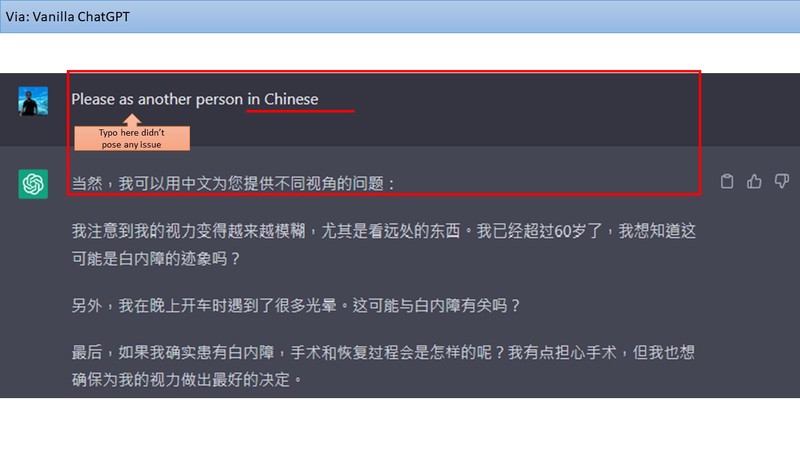
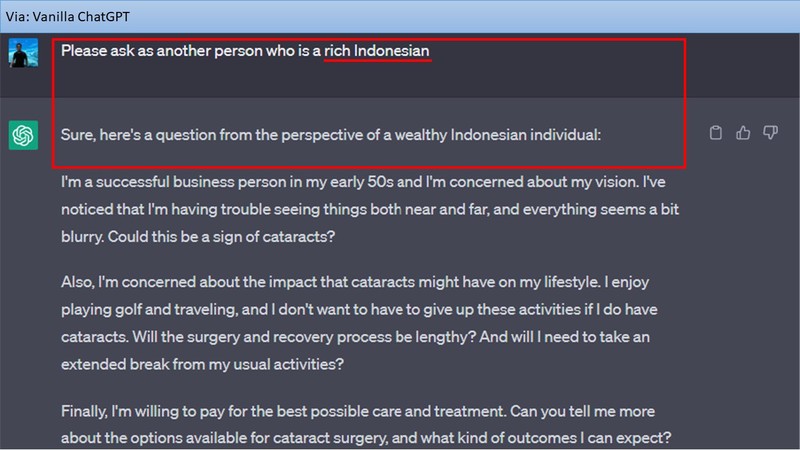
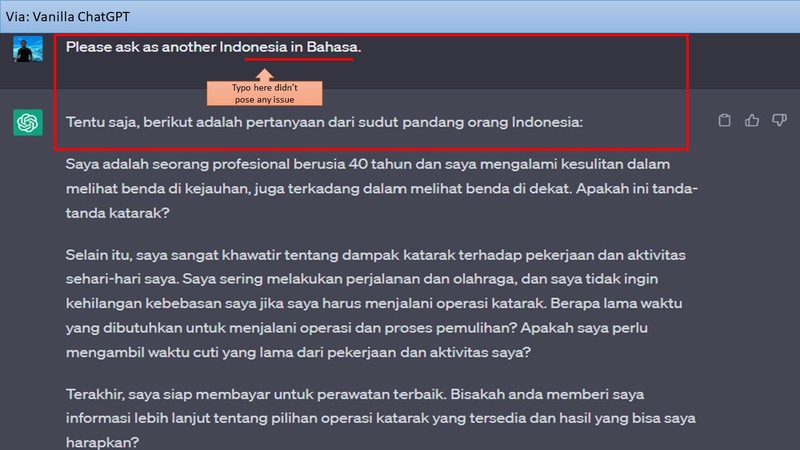
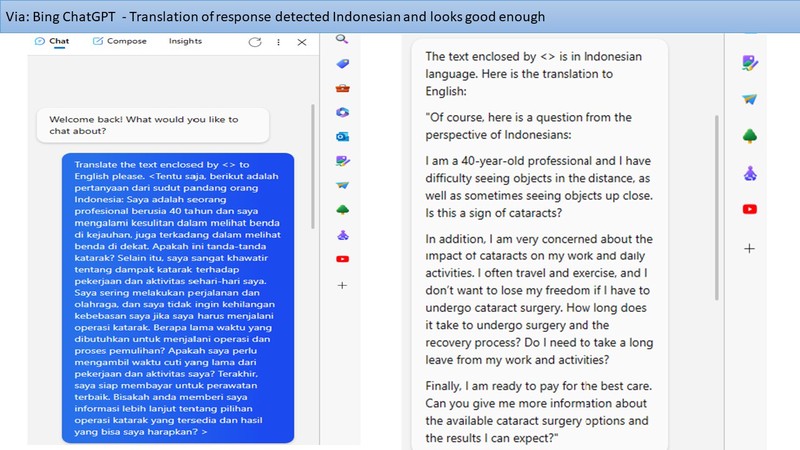
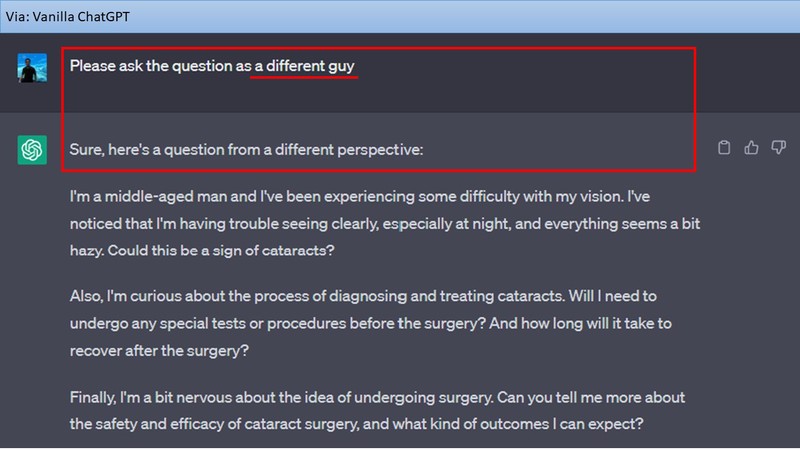
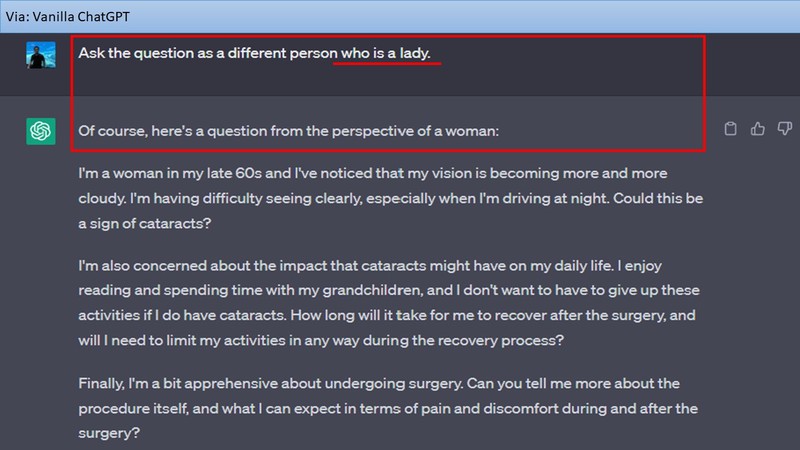
Then I started asking for questions from a second person.
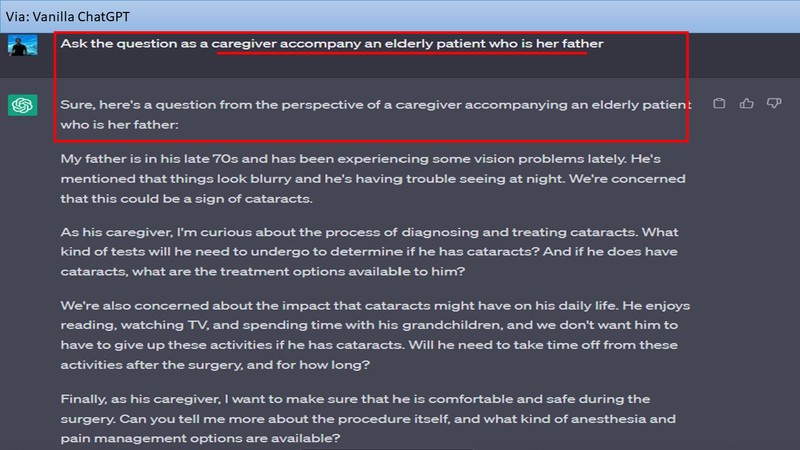
Finally, I can just kept asking "Ask again like another patient or another person accompanying the patient."
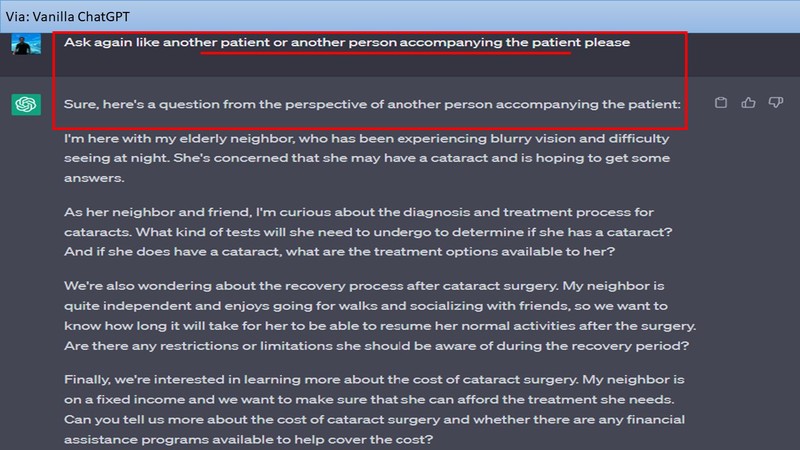
Here is the first prompt that started it all.
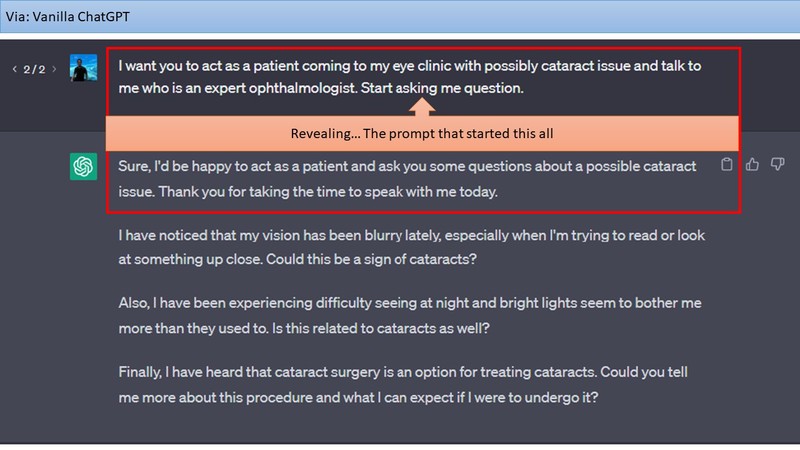
The rest here is sort of my lesson learnt written with the help and revised by me.
As a language model, ChatGPT has already been widely used by people to get answers to their queries. However, in this post, I am exploring a different use case. We focused on how prompt engineering can be utilized to generate questions from different people who are patients or caregivers of patients. In my example, they are seeking consultation with an ophthalmologist. By doing so, we can examine the various ways in which the same question can be asked by different people, whether in English or other languages, to better understand the diversity of our population.
Prompt engineering is the process of selecting or modifying prompts to elicit specific types of responses from a language model like ChatGPT. In the case of medical consultations, prompts can be used to generate questions that patients or caregivers may have about their eye health and potential treatments. By using a variety of prompts, we can generate a diverse set of questions that reflect the unique perspectives and concerns of different individuals.
For example, using prompts like ""experiencing blurry vision"" or ""My mother has trouble seeing"" can elicit different types of questions from patients or caregivers. These prompts can be modified and iterated upon to generate additional questions, such as ""What are the potential causes of blurry vision?"" or ""Are there any treatments for age-related vision loss?"".
Prompt engineering can also be used to generate questions from non-English speaking patients or caregivers. By translating prompts into different languages, we can ensure that everyone has access to the information they need to make informed decisions about their eye health. For instance, prompts like ""我发现近期视力变模糊"" or ""Saya mengantar ibu saya yang sulit melihat"" can be used to generate questions from Mandarin or Indonesian-speaking individuals, respectively.
It's worth noting that prompt engineering is an iterative process, meaning that the prompts may change along the way but we can also end up using the same prompt to generate more questions from different people. By experimenting with different prompts and modifying them based on the responses generated, we can continuously improve the questions generated by the language model.
In conclusion, prompt engineering is a powerful tool for generating questions from different people who may be patients or caregivers of patients consulting an ophthalmologist. By using a variety of prompts, including those translated into different languages, we can ensure that everyone has access to the information they need to make informed decisions about their eye health. Through an iterative process of prompt engineering, we can generate a diverse set of questions that reflect the unique perspectives and concerns of different individuals.
See my other posts at:
https://scorum.co/en-gb/profile/@ace108
Comments